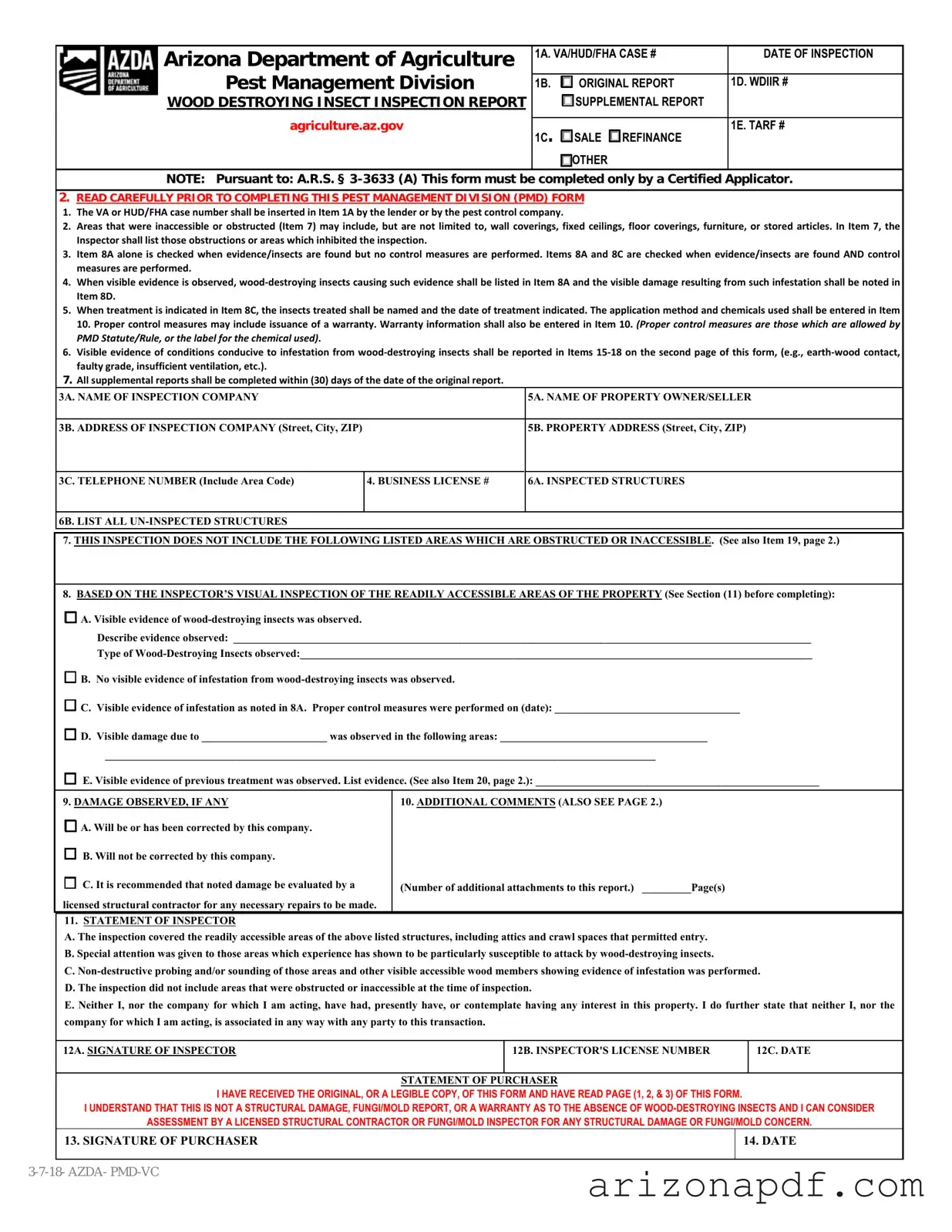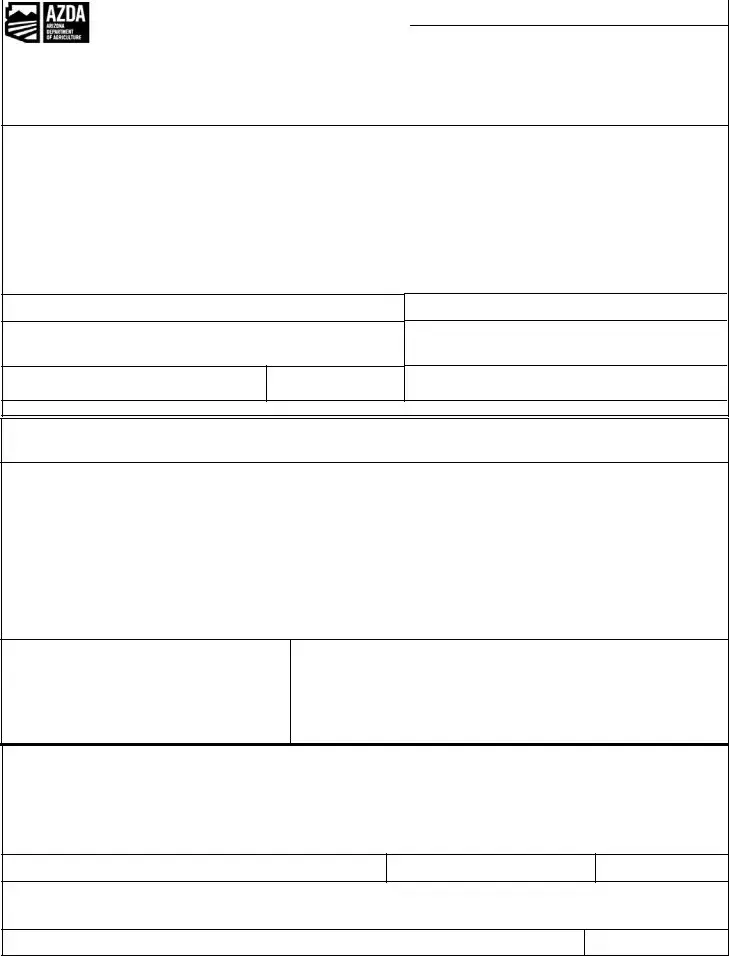What is the purpose of the WDIIR form in Arizona?
The Wood-Destroying Insect Inspection Report (WDIIR), mandated by the Arizona Department of Agriculture, serves a crucial role in real estate transactions. Its primary goal is to document the presence or absence of wood-destroying insects, such as termites, in a property that is being sold, refinanced, or subjected to other situations requiring a formal evaluation. The form helps buyers and sellers understand the condition of the property regarding pest infestation and damage, which can significantly impact property value and safety.
Who is authorized to complete the WDIIR form?
Only a Certified Applicator can complete the WDIIR form. This requirement ensures that the individual conducting the inspection and filling out the report has the necessary qualifications, knowledge, and experience to accurately identify wood-destroying insects and any related damage. The certification process includes meeting the standards set by the Pest Management Division (PMD) of the Arizona Department of Agriculture.
What happens if the inspection uncovers evidence of wood-destroying insects?
If the inspection reveals evidence of wood-destroying insects, the specific type of insects found will be listed in the report. Additionally, if any damage is visible, it will be described, including the location and extent of the damage. The report will also indicate whether any control measures were performed on the property. If treatment was performed, the report will detail the type of insects treated, the date of treatment, the methods used, and any warranty information, if applicable.
Can the WDIIR form be used for structural damage or mold reports?
No, the WDIIR form cannot be used as a structural damage or mold report. While the form includes sections for noting visible damage and conditions conducive to infestations, it is specific to wood-destroying insects and does not cover assessments of structural integrity or mold presence. Property owners or buyers concerned about these issues should engage licensed professionals in those fields for appropriate evaluations.
What if there are inaccessible areas during the inspection?
During the inspection, some areas may be obstructed or inaccessible for various reasons, such as stored items, structural components, or safety concerns. The inspector will list these areas in the report and note that they were not inspected. This acknowledgment helps all parties understand that the inspection report may not cover every possible area of the property and further investigation may be needed if accessible conditions change.
What are conditions conducive to infestation, and how are they reported?
Conditions conducive to infestation refer to environmental or structural situations that can attract or support the presence of wood-destroying insects. Examples include wood-to-earth contact, excessive moisture, and faulty grading. The WDIIR form includes sections for the inspector to check off specific conditions found during the inspection and provide comments if necessary. Reporting these conditions helps in identifying potential risk areas and taking preventative measures.
Is previous treatment for pests reported on the WDIIR form?
Yes, the WDIIR form includes sections for reporting evidence of previous pest treatment. If the inspecting company has previously treated the property, this information will be detailed, including the date of initial treatment, the target pest, warranty expiration date, and any other relevant comments. If another company performed the treatment, the report would note that evidence of treatment exists but further investigation by the buyer is recommended to determine the adequacy and current validity of the treatment.
How long after the original report are supplemental reports valid?
All supplemental reports must be completed within 30 days of the date of the original report. This timeframe ensures that information provided is timely and relevant to the current condition of the property, considering the rapid nature of changes that can occur with wood-destroying insect populations and the resulting damage.



